Collection: Pressure Vessels & Tanks
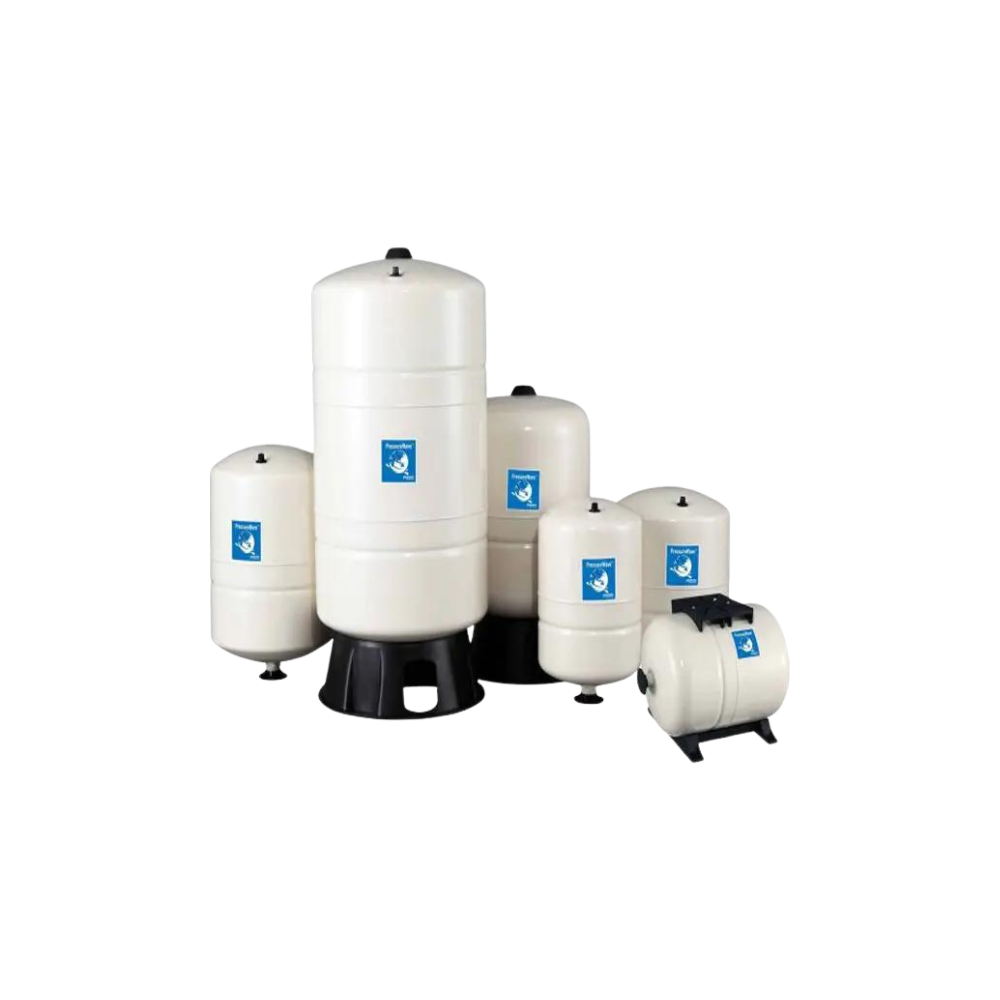
Pressure Vessels
A borehole or private water system is made up of many different components and controls. Depending upon the requirements and application there may be different options or sizes of pressure vessel available.
A pressure vessel is used to provide a reserve of pressurized water to limit the number of starts of and wear on the pump. The pressure switch will cut in when the pressure drops below a pre-set point starting the pump and cuts out when the required pressure is achieved.
Pressure tanks can be coupled to water pumps (surface or submersible) to provide a self-contained pressurized supply for direct connection into an existing piped system without the need for header tanks or float switches.
Celtic Water Solutions supplies and installs only quality pressure vessels and switches. We use pressure tanks that are long-life vessels ideally suited for controlling the pressure in domestic, as well as industrial applications, cold-water (drinking-water) systems.
All our pressure equipment is sourced from top brands, ensuring that we deliver only the best in quality and reliability.
Applications of Pressure Vessels
- Booster systems
- Well systems
- Irrigation systems
- Thermal expansion
- Hydronic heating expansion
- Hydraulic hammer arresting
- Clean water backwash for Ultra-Filtration systems
Benefits of Pressure Tanks
- Maintenance Free
- Diaphragm design
- Virgin polypropylene liner
- Condensation reducing design
- Two-part polyurethane, epoxy primed paint finish
- Patented stainless steel water connection
- Leak-free, O-ring sealed air valve cap
Our Range of Pressure Vessels
Our pressure vessels come in a variety of sizes and specifications to suit your specific needs. These include vertical diaphragm tanks, horizontal diaphragm tanks, cylindrical diaphragm tanks, rectangular diaphragm tanks, multi-compartmental pressure vessels.
PressureWave Series
The PressureWave™ series are superior quality, versatile pressure tanks. Models are available from 2 to 150 litres, with a maximum working pressure of 10 bar, making them ideal for a range of applications.
The PressureWave™ Pressure Vessel Series is constructed of a virgin polypropylene liner combined with an FDA approved high-grade butyl diaphragm. This is held against the wall of the tank with a steel clench ring.
The brass air valve, sealed by a threaded o-ring valve cap, prevents air leaks. Water enters the tank through a patented stainless steel water connection. The diaphragm and liner are both reinforced in specific wear areas for longer life.
All internal parts including the air valve are rounded to prevent piercing of the diaphragm in extreme conditions. The water connection uniquely provides a dual water/air seal ensuring a complete leak free and maintenance-free pressure vessel.
-
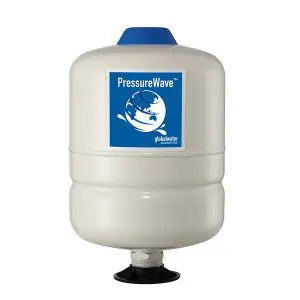
PressureWave Series 4 Litre Inline Pressure Vessel
Enquire Now -
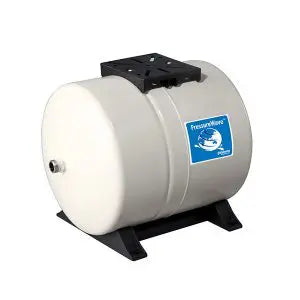
PressureWave Series 20 Litre Horizontal Pressure Vessel
Enquire Now -
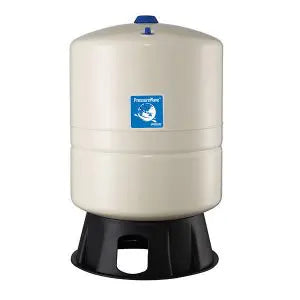
PressureWave Series 60 Litre Vertical Pressure Vessel
Enquire Now -
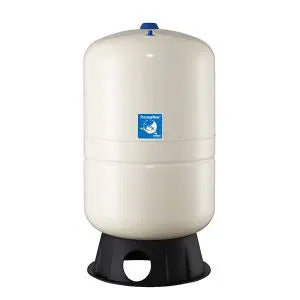
PressureWave Series 100 Litre Vertical Pressure Vessel
Enquire Now -
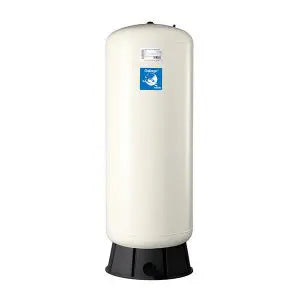
PressureWave Series 150 Litre Vertical Pressure Vessel
Enquire Now
Challenger Series
The Challenger™ range of carbon steel tanks is available from 60 to 450 litres, with a maximum pressure of 10 or 8.6 bar (for tanks sold to NPT markets). Ideally suited to a wide range of applications.
Efficient and cost-effective, Challenger™ tanks are designed with a patented controlled action CAD-2 diaphragm assembly. They feature chlorine resistant 100% butyl diaphragm with a precision moulded copolymer polypropylene liner for superior air and water separation.
The CAD-2 diaphragm assembly is clenched together with a positive lock internal clench ring which contains drawdown water in a pre-charged air atmosphere, thus producing separation between the diaphragm and tank wall.
This “air buffer” design means fewer problems with condensation. Constructed with an FDA approved high grade butyl, the diaphragm assembly seals water in a true non-corrosive chamber.
-
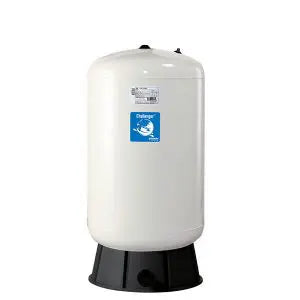
Challenger Series 200 Litre Vertical Pressure Vessel
Enquire Now -
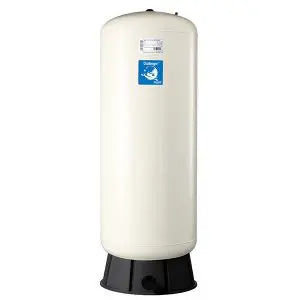
Challenger Series 300 Litre Vertical Pressure Vessel
Enquire Now -
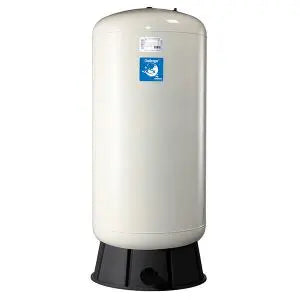
Challenger Series 450 Litre Vertical Pressure Vessel
Enquire Now
Collapsible content
What is a pressure vessel and what is it used for?
What is a pressure vessel and what is it used for?
A pressure vessel is a container specifically designed to hold gases or liquids at a pressure significantly different from ambient (outside) pressure. They are used in many applications — including water supply systems, heating/cooling systems, industrial processes, and compressed air or gas storage. Their design ensures safety, strength, and reliability under pressure conditions.
What standards and regulations apply to pressure vessels in Ireland / the EU?
What standards and regulations apply to pressure vessels in Ireland / the EU?
In Ireland, pressure vessels are regulated under statutes such as Safety, Health and Welfare at Work (General Application) (Amendment) Regulations 2012 (S.I. No. 445 of 2012), which deal with pressure systems and require periodic examinations.
Also, there are European regulations like the Pressure Equipment Directive (PED) 2014/68/EU which require conformity, safety markings, and design/manufacturing standards when placing pressure equipment on the EU market.
How do I choose the right size and pressure rating for my needs?
How do I choose the right size and pressure rating for my needs?
To choose the correct size and pressure rating, consider:
• The maximum pressure you need — this determines wall thickness, safety features.
• The volume/capacity required, depending on the flow or storage needs.
• The type of fluid/gas — water, air, other — and whether corrosion, temperature, or chemical reactivity are concerns.
• Operating temperature range, pressure cycles (i.e. how often pressure changes).
• Standards/regulations applicable (so the vessel is compliant)
How long do pressure vessels typically last?
How long do pressure vessels typically last?
With proper design, suitable materials, and good maintenance & inspections, pressure vessels often last 20-30 years or more.
Lifespan depends heavily on factors like corrosion, pressure and temperature cycling, material fatigue, maintenance quality, and environment.
What maintenance and inspection is required?
What maintenance and inspection is required?
Regular visual inspections for signs of corrosion, cracks, leaks.
Non-destructive testing (e.g. ultrasonic thickness measurement) to detect thinning or degradation.
Periodic “thorough examination” as required by Irish regulations (SI No. 445/2012) by a competent person.
Ensuring safety accessories like pressure relief valves are working correctly.
Keeping records of inspections, repairs, and modifications.
What safety features are needed in a pressure vessel?
What safety features are needed in a pressure vessel?
Important safety features include:
- Pressure relief valves to prevent over-pressure.
- Pressure gauges or sensors.
- Adequate thickness and material strength to handle design pressures and temperatures.
- Proper welding and joint integrity.
- Marking/data plate with manufacturer, serial number, maximum working pressure, capacity, etc. (as required by regulations)
What is the difference between a pressure vessel and a storage tank?
What is the difference between a pressure vessel and a storage tank?
A pressure vessel is designed to withstand internal or external pressures exceeding ambient pressure (or vacuum), often with safety margins, pressure ratings, safety devices, specialized materials.
A storage tank typically stores fluids at or near ambient pressure (no significant overpressure or vacuum), so design, material, safety requirements are usually less demanding.








